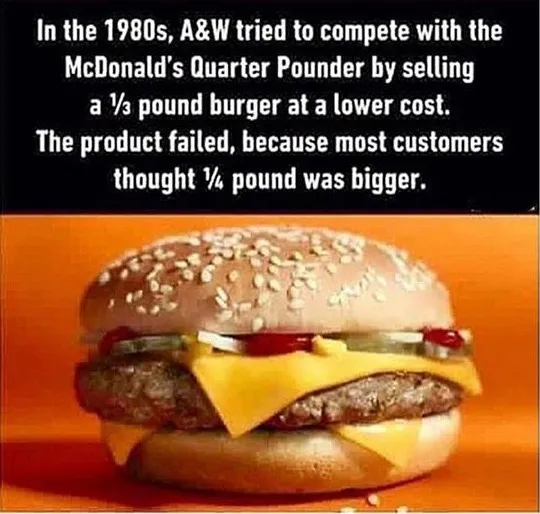Why You Should Expose Your Product To The Market ASAP

In the 1980’s, A&W tried to compete with the McDonald’s Quarter Pounder by selling a 1/3 pound burger at a lower cost.
The “Third Pounder” burger was priced the same as the Quarter Pounder but had more meat, and outperformed McDonald’s in blind taste tests, with customers preferring the flavour of A&W’s burger.
So what went wrong?
The product failed, because most customers thought 1/4 of a pound was bigger than 1/3 of a pound.
A product that had:
- Better value for money (more meat for the same price)
- Better flavor (based on blind taste tests)
failed because most people simply didn’t understand the messaging.
If a burger fails because people aren’t good with fractions, then I’m willing to bet your app value proposition or your UI are causing more confusion than you might think :)
The people that made the decisions had lots of previous experience, no doubt, but the product still flopped due to something they could not control.
Alfred Taubman, owner of A&W at the time, wrote about the confusion in his book Threshold Resistance:
More than half of the participants in the focus groups questioned the price of our burger. “Why,” they asked, “should we pay the same amount for a third of a pound of meat as we do for a quarter-pound of meat at McDonald’s? You’re overcharging us.” Honestly. People thought a third of a pound was less than a quarter of a pound. After all, three is less than four!
A business is made up of hypotheses, one of the hypothesis here was that people would want to pay less for more meat, but a key assumption was that people were able to understand fractions, which turned out to not be the case.
They assumed the customer was able to tell that 1/3 was bigger than 1/4, which proved to be wrong.
“The customer, regardless of his or her proficiency with fractions, is always right.”
This doesn’t mean the customer’s facts are right, it just means that if you are selling something nobody understands, you will not sell. Let’s replace customer with market, the market is always right.
Conclusion
Spend less time behind closed doors discussing minute details and ship out a basic, simple version of your product or landing page as soon as possible.
Simply getting the messaging right is extremely important! If the messaging doesn’t perform, people may never use your amazing product.
This case shows a great product failing due to the messaging. And let’s face it, this is a burger.
If a burger fails because people aren’t good with fractions, then I’m willing to bet your app value proposition or your UI are causing more confusion than you might think :)
Ask yourself
- What assumptions are you making for your product?
- What hypotheses did you skip?
- Is your messaging as good or better than your product?
- Have you gotten enough feedback from users?